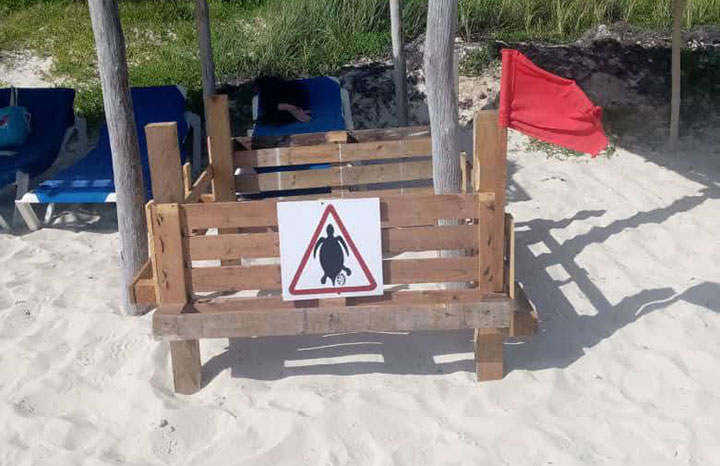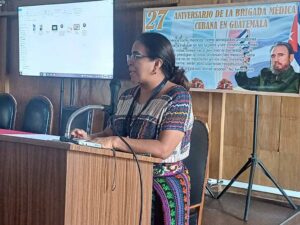The Mojito Hotel, managed by the Cubanacán Hotel Group, notified through its Facebook account the nesting of a sea turtle on the sandy beach segment near that facility in the Jardines del Rey tourist destination, in the north of Ciego de Ávila province.
This message disseminated through the digital platform highlights the privilege and responsibility of contributing to the care and preservation of these chelonians, considered among the longest-lived on the planet and endangered, as a consequence of the global deterioration of marine-coastal ecosystems.
The current reproductive stage of sea turtles has been particularly active in Cayo Coco, with a total of eight nesting reports, distributed across Las Coloradas, Larga and Prohibida beaches, the latter with a concentration of six nests and the advantage of being located in a protected area with the category of Ecological Reserve.
Nests of green turtles, loggerheads and hawksbills are recorded, according to information disseminated in recent days by the Cuban News Agency.
In all cases, relevant security measures are adopted to safeguard the areas where the eggs were deposited, in quantities exceeding one hundred, as is usual for these chelonians.
The degradation of these reptiles’ habitats is associated with impacts on the sandy beaches where the reproductive process occurs, which includes poor condition due to erosion and pollution resulting from the indiscriminate dumping of liquid and solid waste, including plastic debris, in coastal areas and oceans.
Among the risks of losing these animals are also poaching and incidental fishing, and climate change.
Safe beaches and healthy seas are decisive for the survival of sea turtles, whose reproductive cycle becomes a ritual when they return to their place of origin to deposit their eggs on the sand and continue the life of the species.
Consequently, the staff of the Mojito Hotel consider that the beaches where sea turtles lay their eggs should be protected, in order to increase the survival rate of the hatchlings.
Consistent with this statement, after the spawning was identified by a worker at the tourist facility, they proceeded to delimit and mark the site where the eggs remain, which could hatch within a period between 45 and 75 days, according to expert criteria.
Researchers and specialists from the Centre for Coastal Ecosystem Research (Ciec), subordinate to the Environment Agency of the Ministry of Science, Technology and Environment (Citma), determine the species of sea turtle that nested and advise the workers of the Mojito Hotel to provide adequate protection to the site.
Sea turtles in Cuba are distributed throughout the insular platform; however, the main nesting zones are located in the south of the country, recently estimated Doctor of Science Julia Azanza Ricardo, director of the Centre for Marine Research at the University of Havana.
The presence of five species is reported in the Cuban archipelago and four spawn in its region.
In the largest Antillean nation, the main actions for conservation are included in a programme for monitoring these populations and research projects on the dangers they face.




